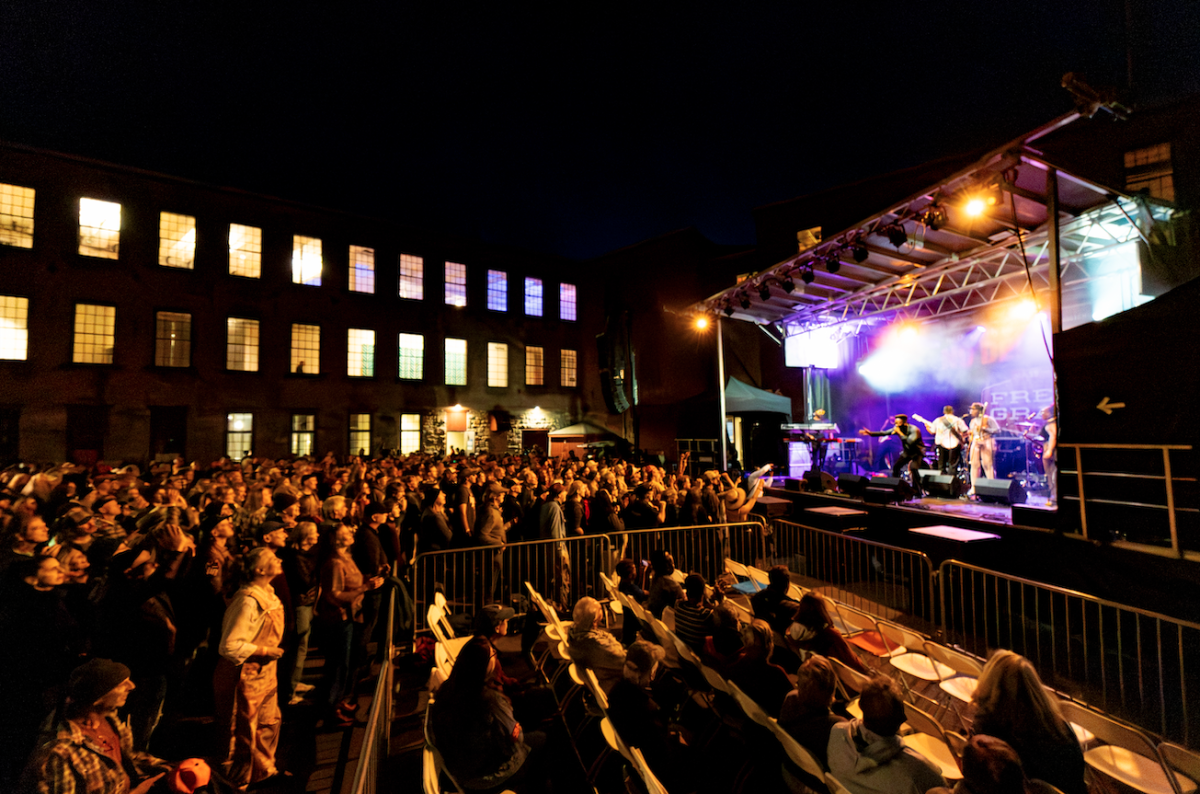Last Friday, Museum Town began showing at Images. While the College community may be familiar with the film’s focus, the Massachusetts Museum of Contemporary Art (MASS MoCA), many are not familiar with the institution’s history.
Every weekend, as students depart campus, they often find themselves at MASS MoCA in North Adams. MASS MoCA often serves as a respite from the isolating nature of the Berkshires. In addition to housing world-renowned contemporary visual art, MASS MoCA hosts multiple music festivals, concerts and performances throughout the year while also having two restaurants, a coffee shop and a brewery on site.
In combining its many opportunities for the arts, its mini-city like campus and its position as America’s largest contemporary art museum, MASS MoCA is a one of a kind space raising questions about the potentiality of art’s scale, positionality with its viewers and relationship between the artist and the patron, the art and the gallery space. That said, there is often a disconnect between those who walk MASS MoCA’s industrially atmospheric and brick-clad campus and the history of the physical space — that is, the contradiction between the “high art” inside the gallery spaces and its exterior, which recalls a once-thriving mill town.
Director Jennifer Trainer’s 2019 documentary Museum Town explores the building of MASS MoCA from its theoretical origins in the 1980s and its physical origins going back to the 19th century. The 75-minute film, which made its world premiere in the Documentary Feature Competition at the SXSW Film Festival in Austin, Tex. this past March, does not explore the growth of MASS MoCA in a vacuum — without the town of North Adams, even the idea of the museum would be unfathomable. Trainer, the current CEO and Director of Hancock Shaker Village, spoke with me about the process of filmmaking and the impetus behind Museum Town.
“People who are moving in today, they don’t see the old narrative of North Adams, which is really a company town that hit the skids because the one company in town went out of business and moved elsewhere. They see North Adams as a place of possibility,” Trainer said, explaining the view that MASS MoCA architect Simeon Bruner held on the relationship between the town and the museum. Trainer, however, already had a gauge on the history of North Adams and has a personal and professional connections with MASS MoCA. Having worked there for 28 years as director of development and public relations, director of development and external affairs and as an executive vice president, she knew how special the museum’s history and approach to displaying art was.
Museum Town concurrently focuses on two timelines – the history of the town and museum and the eighteen-month installation process of Nick Cave’s 2017 project Until. Trainer knew that she didn’t want to make a documentary describing the particular history of MASS MoCA in a formulaic way, but she also knew the nature of making a documentary about an art museum would be insightful in and of itself. “I’ve been working in museums for thirty-some odd years and… I think most people don’t have a clue what it’s really like inside a museum,” said Trainer.
Trainer’s goal of introspection into art museums as a whole, through the singular approach MASS MoCA takes to contemporary art, was fascinating and well-executed through her roving cast of five key characters – artist Nick Cave; a curator; a fabricator; a North Adams woman who worked in the factory for 45 years before its close and then volunteered at MASS MoCA; and, finally, the buildings themselves. “The buildings really inform everything that’s done there,” Trainer said. “They’re really willful, not many galleries have that many windows and aren’t square boxes.” The abnormality of MASS MoCA’s gallery space was articulated implicitly throughout Museum Town. Viewers see dozens of hands helping construct Nick Cave’s giant cloud for Until, painters bringing Sol Lewitt’s instructional paintings to life and the mass of participants in Ann Hamilton’s installation Paper Chorus.
Museum Town succeeds in its goal – to tell the story of how a once thriving industrial city was hurt by the departure of its own hegemonic company, the process of MASS MoCA’s institutionalization and the resulting effects it had on current-day North Adams. It does so with technical excellence in its cinematography, wonderful score and soundtrack (Wilco’s John Stirratt, who now lives in North Adams, was the music supervisor and composer) and a soothing narration by Meryl Streep. However, Museum Town culminates with less critical analysis than one might assume would accompany a documentary about as nuanced of a relationship between museum and environment as MASS MoCA and North Adams. While testimonials of skeptical North Adams residents are provided, the documentary does not further explore questions of gentrification, development and who the museum is actually benefitting.
That said, Museum Town provides a detailed story of a specific history, and this specificity allows it to be almost universal, a goal Trainer had in mind. “They [non-Berkshires residents] see it as one story which can be translated elsewhere…” said Trainer. “It’s really emblematic of post-industrial small cities elsewhere and how they’re trying to rewrite their narrative.”








